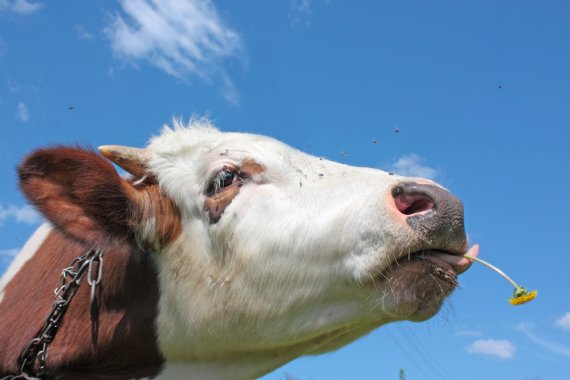©Shutterstock
Van Dixhoorn, a researcher at Wageningen Livestock Research, used sensors to look for signs of increased vulnerability in cows that had just calved. At that point a lot changes for the cow: her hormone balance changes, she starts to give milk, she is moved to another part of the barn with more cows, and her feed regime is changed. All those changes have an impact on the cow’s immune system, which can show up in a low energy balance, or an infected udder or uterus.
‘In that phase, many cows battle with minor ailments but only a few fall really ill,’ explains Van Dixhoorn. She wanted to know what the tipping point was from healthy to diseased, and whether you can see it coming. ‘So I looked for signs of increased vulnerability.’ In doing so, she was testing the theory of Wageningen ecologist Marten Scheffer, who discovered ‘tipping points’ between healthy and diseased nature.
Cows that have a good diet and a set feeding routine before they calve are the healthiest after calving, discovered Van Dixhoorn. The same goes for cows with a fixed circadian rhythm. Restless cows that have a variable rhythm before they calve often suffer health problems after calving. Van Dixhoorn is going to check these indicators at several dairy farms.
Earlier research that Van Dixhoorn did in 2016 showed that pigs in spacious, enriched sheds recovered from diseases faster than pigs in standard sheds. The ‘enriched’ animals had more white blood cells before they were infected than the ‘standard’ ones. She will research when the pigs build up the extra immunity and which management factors are responsible for that.

